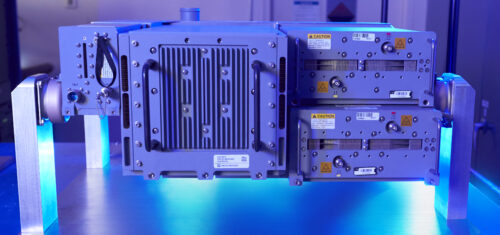Northrop Grumman’s AN/ALQ-257 Integrated Viper Electronic Warfare Suite (IVEWS) for the F-16 fighter jet has successfully completed testing at the U.S. Air Force’s Joint Preflight Integration of Munitions and Electronic Sensors (J-PRIMES) facility, paving the way for flight testing on Air Force F-16 aircraft.

Photo: Northrop Grumman
The J-PRIMES testing, conducted in an anechoic chamber, subjected the IVEWS to complex radio frequency spectrum threats, simulating real-world combat scenarios. The system demonstrated its capability to detect, identify, and counter advanced RF threats while maintaining compatibility with other F-16 systems.
Colonel Michael Rigoni, director of F-16 International Electronic Warfare Systems for the U.S. Air Force, noted that the J-PRIMES testing caps off three years of extensive system-level evaluations. These included multiple Integration Demonstrations and Applications Lab (IDAL) events, a flight demonstration on a surrogate platform during NORTHERN LIGHTNING 2021, and integration testing at Hill Air Force Base’s F-16 Block 50 avionics system integration lab.
The AN/ALQ-257 IVEWS, selected as the U.S. program of record for F-16 electronic warfare in 2019, aims to bring the electronic warfare capabilities of the F-16 in line with those of fifth-generation aircraft. Its ultra-wideband architecture allows it to counter a wide range of RF threats, including advanced millimeter wave systems. Notably, the system offers full pulse-to-pulse interoperability with the AN/APG-83 SABR AESA radar, enhancing the F-16’s overall combat effectiveness.
James Conroy, vice president of navigation, targeting and survivability at Northrop Grumman, expressed confidence in the system’s maturity and its readiness to protect both U.S. and international F-16 fleets. With over 2,000 F-16 aircraft currently in service worldwide, the IVEWS promises to significantly extend the operational relevance of this fourth-generation fighter in contested electromagnetic environments.
For more information, hit the Source below